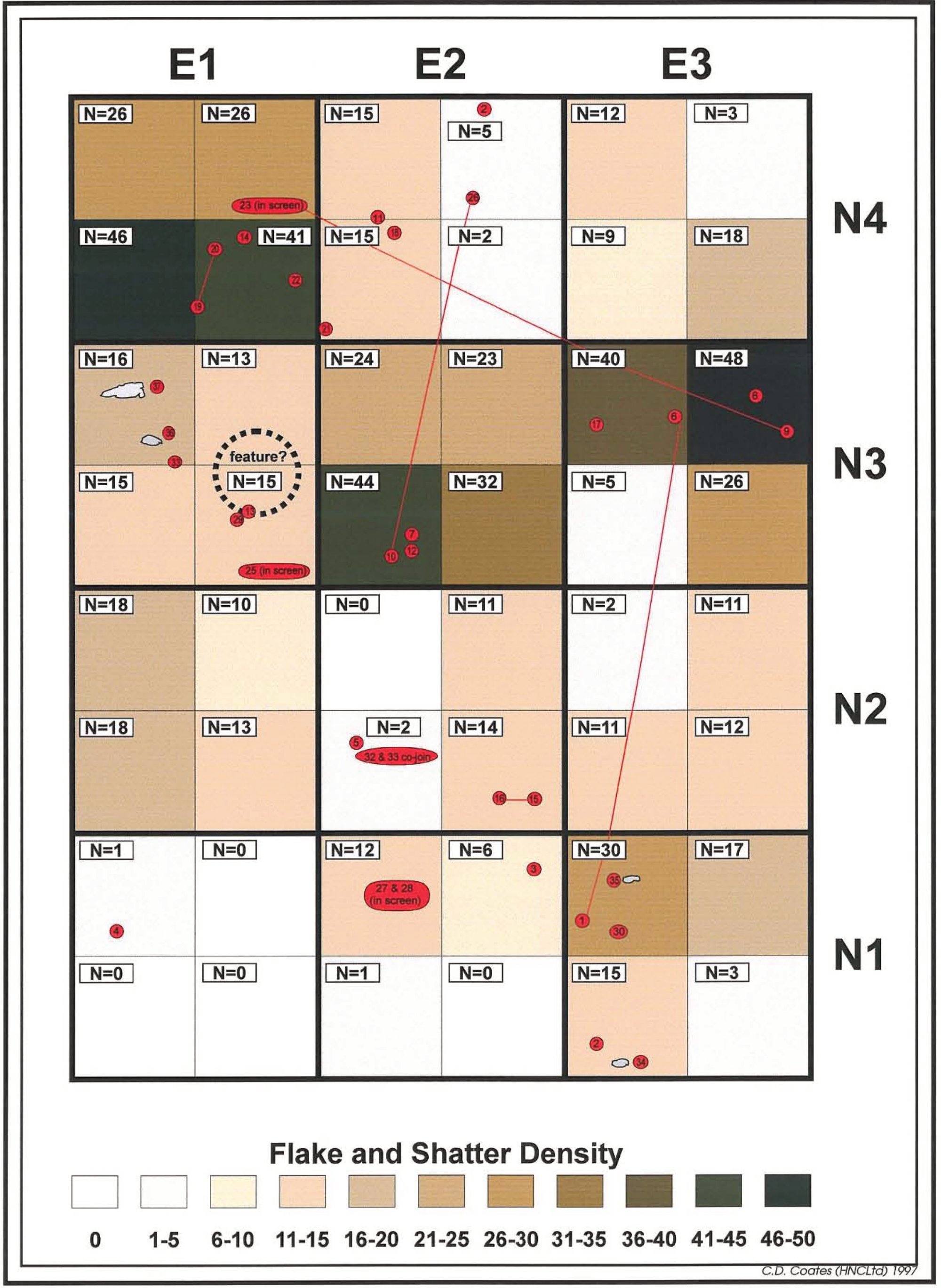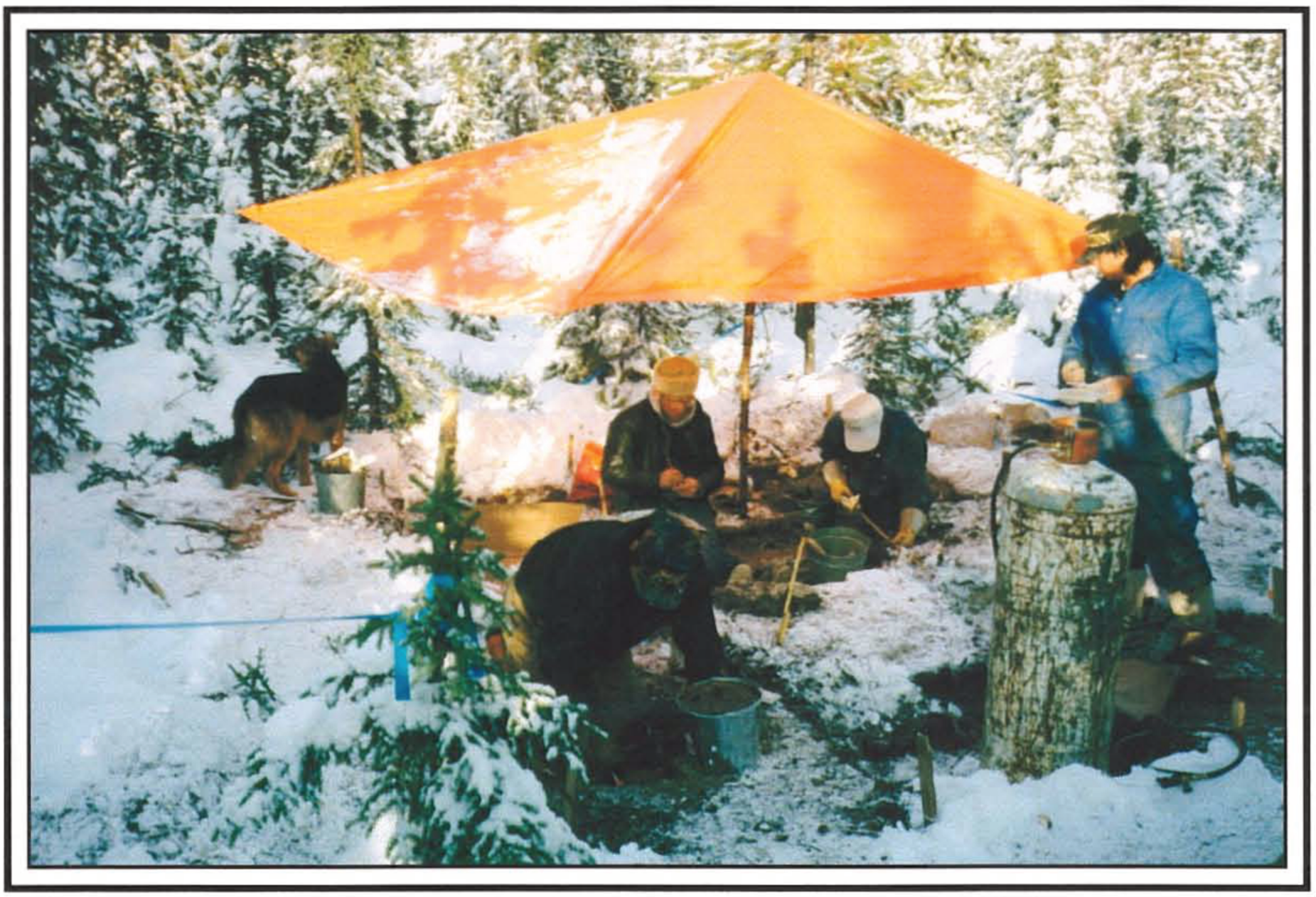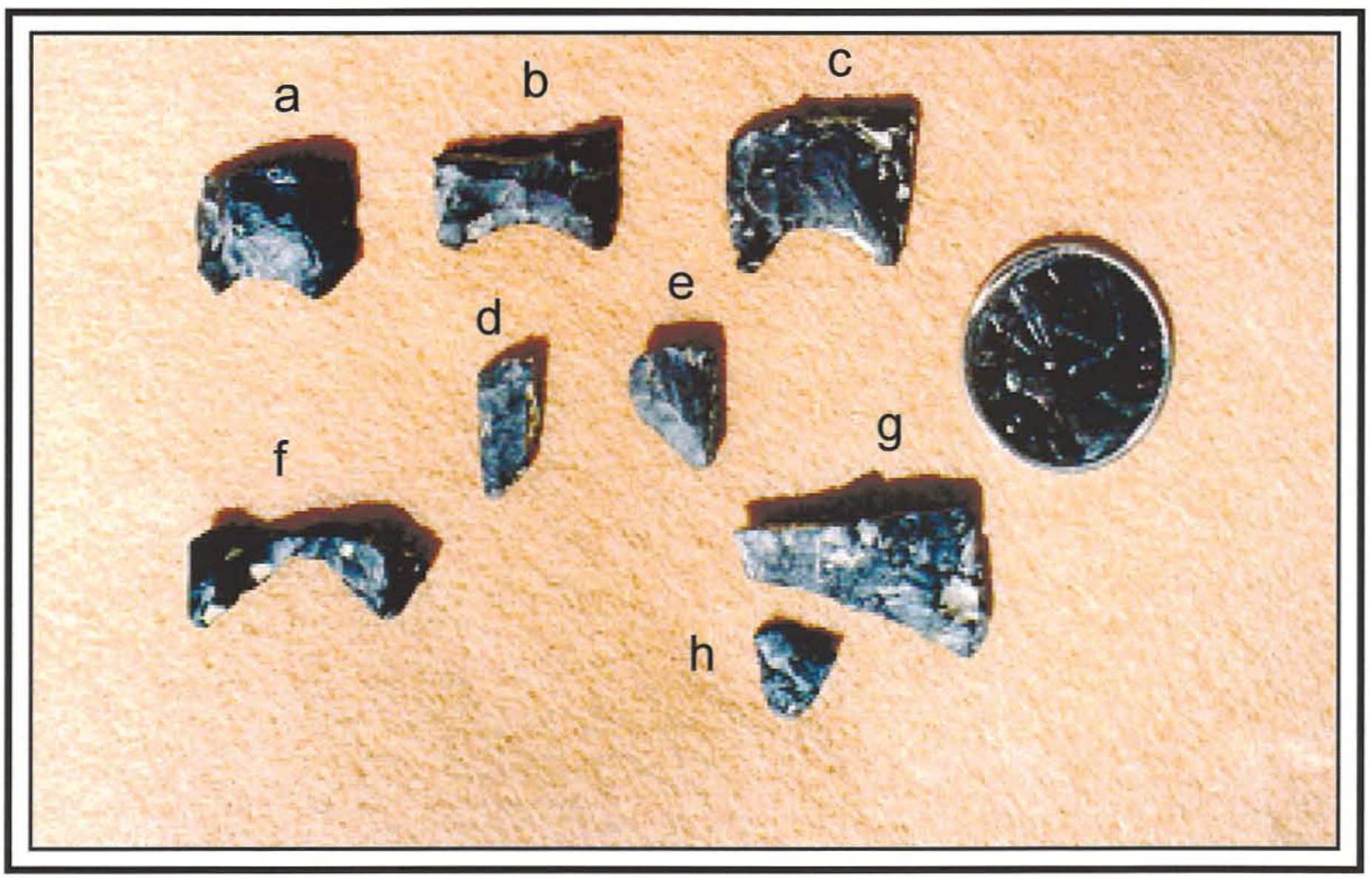When one thinks of an archaeological site, images are often conjured of the remains of large winter pit house villages, ancient burial locations, or caches of impressive stone, bone, and shell artifacts. Although plenty of those types of sites are found throughout the southern interior, one of the most common archaeological sites that archaeologists encounter are called lithic scatter sites. Lithic scatters refer to archaeological sites consisting of stone tools or the waste flakes removed during stone tool production found on the surface or buried in the ground.
Sometimes lithic scatter archaeological sites consist of formed tools, such as spearpoints or arrowheads, but more often than not, they are comprised entirely of the waste flakes or by-products of stone tool manufacture. Archaeologists call these types of artifacts flakes, debitage, or stone chips.
The manufacture of one arrowhead can produce hundreds or even thousands of waste flakes of various shapes and sizes as the person fashioning the tool reduces a natural nodule of stone into a thin and stylized tool. In some cases, archaeologists find hundreds of waste flakes in a small area that if pieced back together would show the whole process of tool manufacture from a raw nodule of stone to a finely crafted tool. Typically larger flakes are chipped off the nodule first and then smaller and smaller flakes are removed as the tool is shaped into its final form.
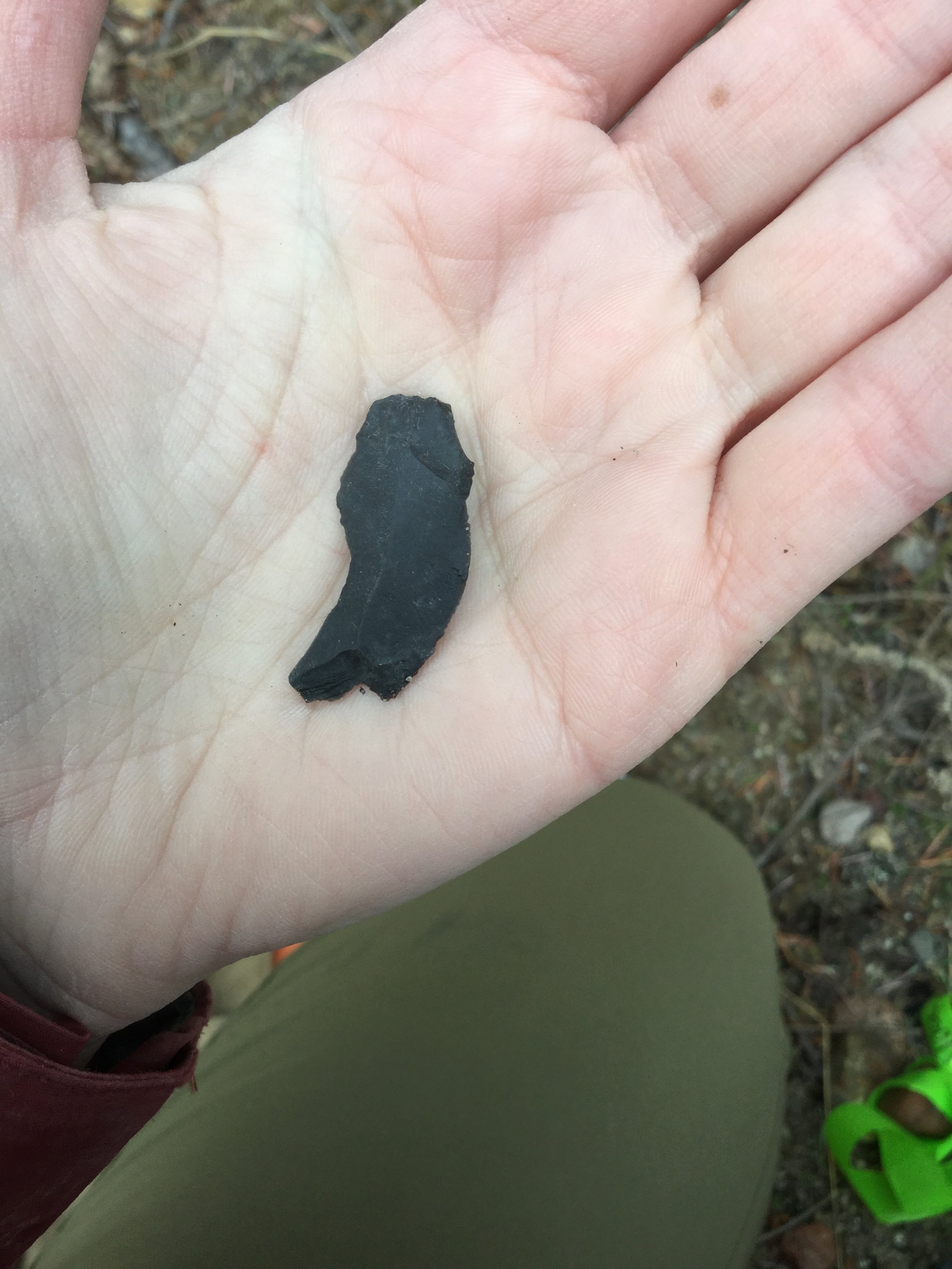
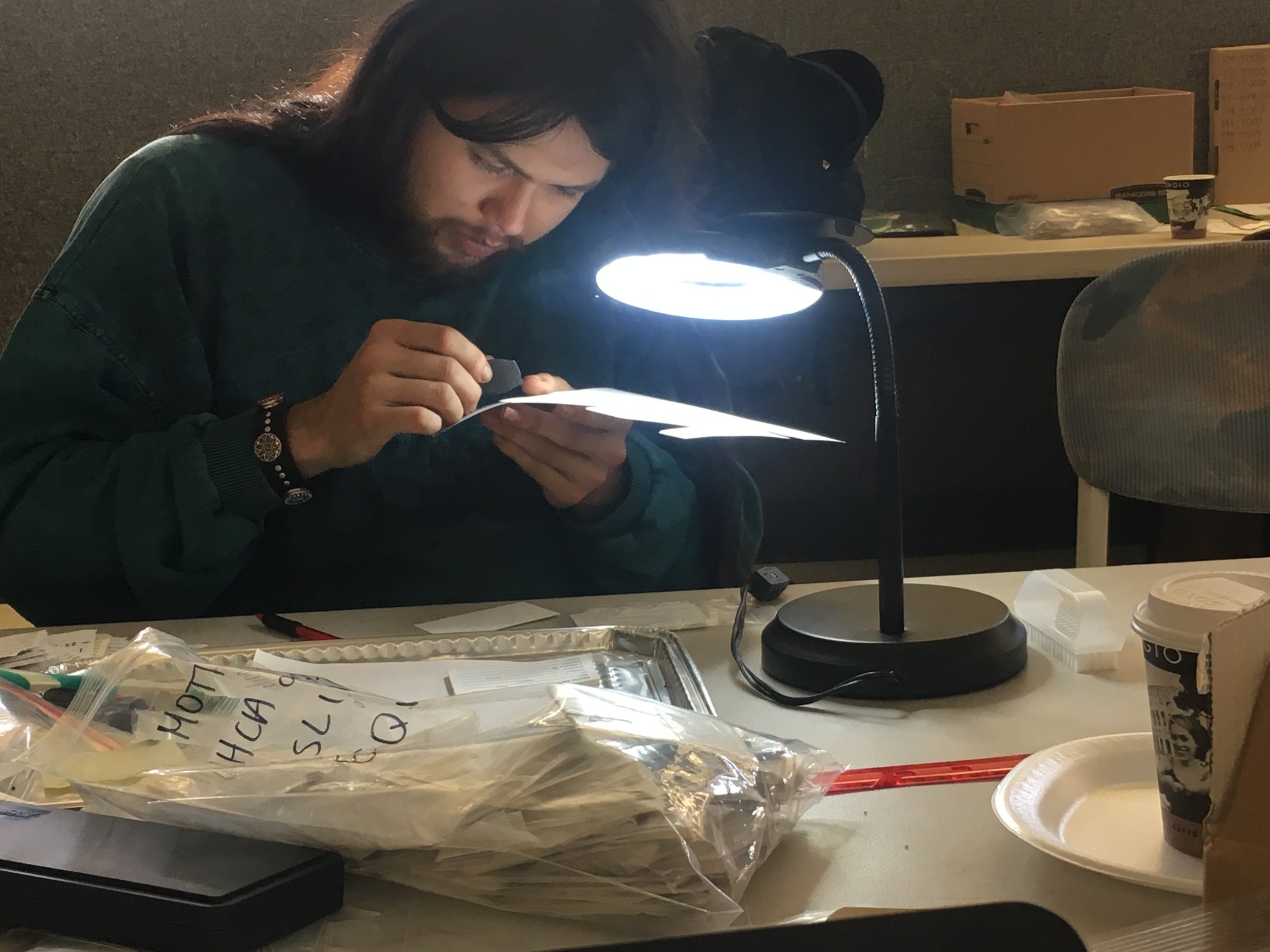
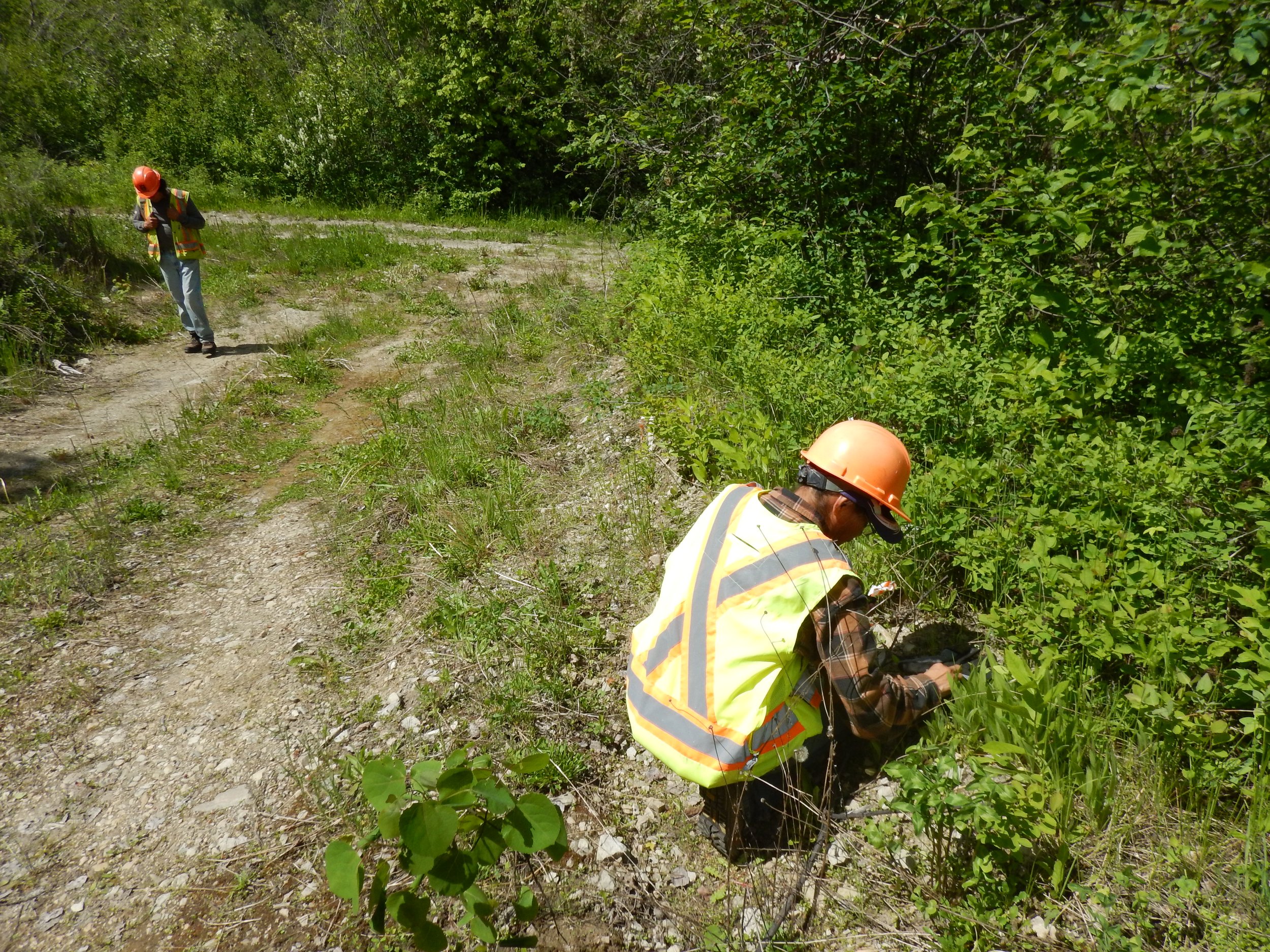
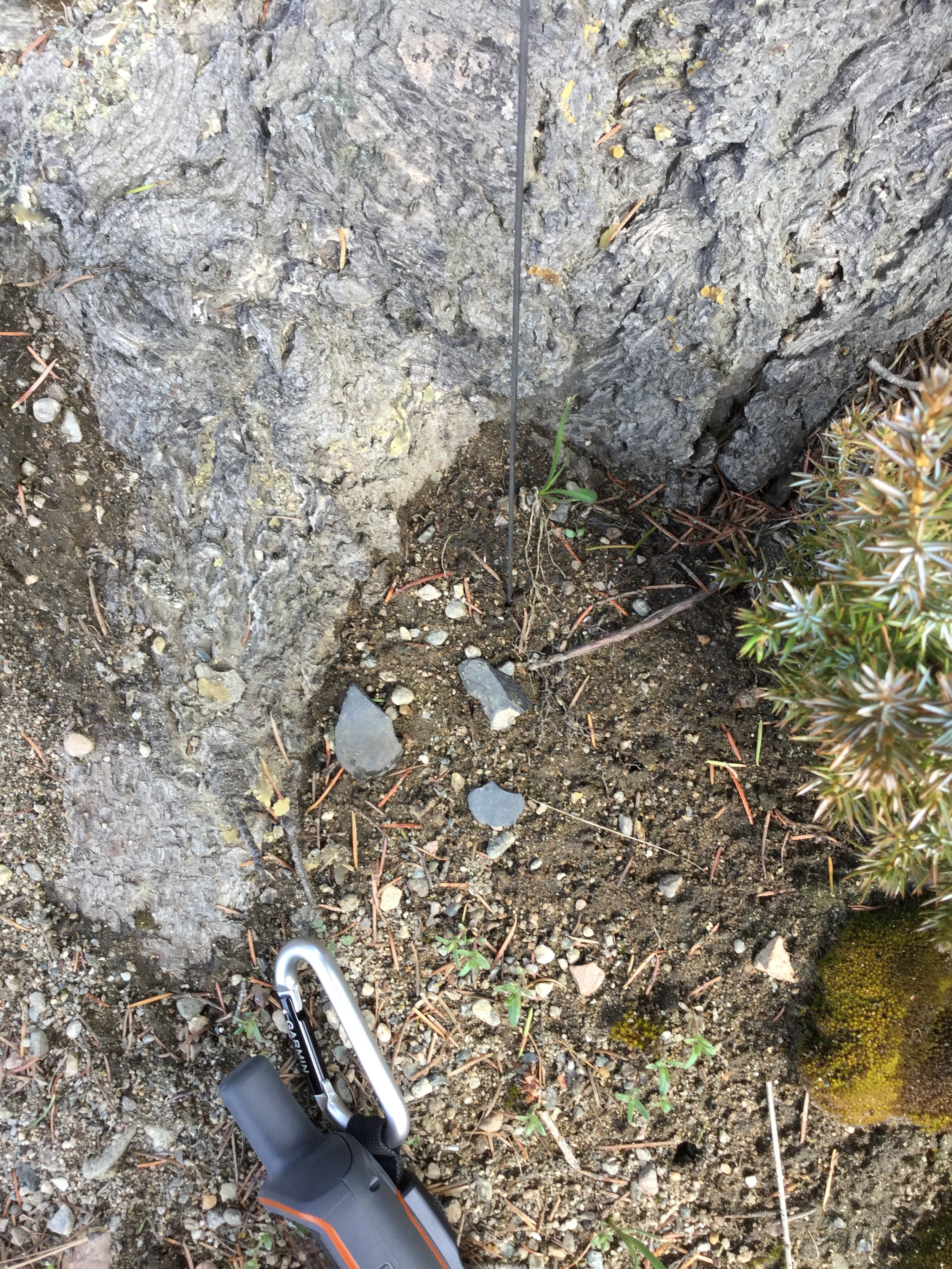
Archaeologists do not always have the luxury of finding hundreds of lithic flakes from an archaeological site to recreate stone tool manufacture and past activities. In fact, many lithic sites in the southern interior and elsewhere in BC consist of isolated finds comprised of one single stone artifact. What can be learned from this simple yet ubiquitous site type?
The short answer is that we can actually infer quite a bit from the discovery of an isolated artifact even if that artifact consists of a single waste flake removed during tool manufacture. First of all, the location of the find can provide information about past land use. If an artifact is found on a high mountain pass or in an isolated valley, it highlights the fact that people were living throughout the landscape in various ecosystems for many thousands of years. The discovery of a stone artifact provides direct physical evidence of past occupation.
Additionally, the type of stone material can provide insights into trade and travel as certain material types, such as obsidian (volcanic glass), are traceable to their source. Obsidian is often found many hundreds of kilometres away from its source providing evidence of extensive past trade networks. Other material types, such as basalts/dacites and cherts, have known quarry sites in the southern interior and finding an artifact manufactured of a particular stone material can indicate where the item originated.
Finding only one waste flake can also provide information about the type of tool that was being made or resharpened based on the attributes of the flake discovered. Moreover, characteristics of the individual flakes themselves can indicate how they were removed from the original nodule of stone. A variety of tools were used during stone tool manufacture to shape and sharpen stone tools, such as hammerstones and antler tine percussors. It is sometimes possible to determine the method that the flake was removed from the larger nodule and the material (i.e., stone or antler) that was used to remove the flake.
Although not the flashiest archaeological site type, lithic scatter sites consisting of one single stone flake are incredibly common. These sites can help paint a picture of life in the past through revealing details about past land use, travel, trade, and method of stone tool manufacture thereby providing an intrinsic link to the past.
